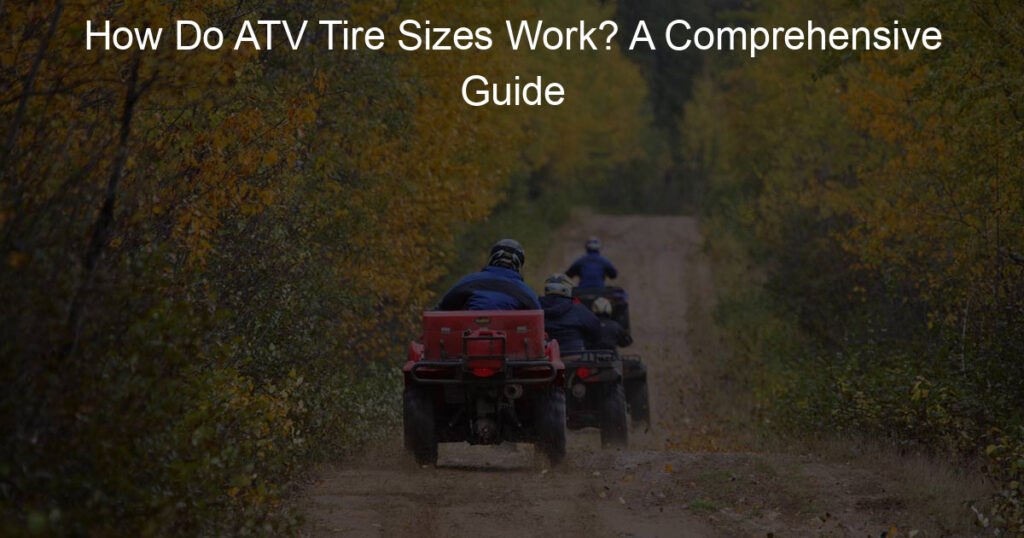When it comes to ATV tire sizes, understanding how do ATV tire sizes work is crucial for optimal performance and a comfortable ride.
ATV tire sizes are typically displayed on the tire sidewall and are expressed in two different formats: imperial (inches) and metric (millimeters and inches). The imperial format is more commonly used for ATV tires, whereas the metric format is often seen with other types of vehicles.
By learning how to read and interpret these numbers, you can ensure that you choose the right tire size for your ATV, leading to better handling and a more enjoyable riding experience.
The components of ATV tire sizes include overall height/diameter, tire width, and wheel diameter. Knowing how to interpret these numbers allows you to make informed decisions about which tire size best suits your ATV’s specifications and intended use.
Properly sized tires directly impact an ATV’s performance, including acceleration, braking, speed, and maneuverability.
Choosing the appropriate tire size for your ATV is important, as incorrect tire sizing may lead to potential issues such as reduced performance, tire damage, or even accidents.
Having a solid understanding of ATV tire sizes and their impact on performance can make the right choice for your vehicle and enjoy a safe, comfortable ride.
Key Takeaways
- Understanding ATV tire sizes is essential for optimal performance and a comfortable ride.
- Components of ATV tire sizes include overall height, tire width, and wheel diameter.
- Proper tire sizing is crucial to avoid reduced performance, tire damage, or accidents.
How Do ATV Tire Sizes Work
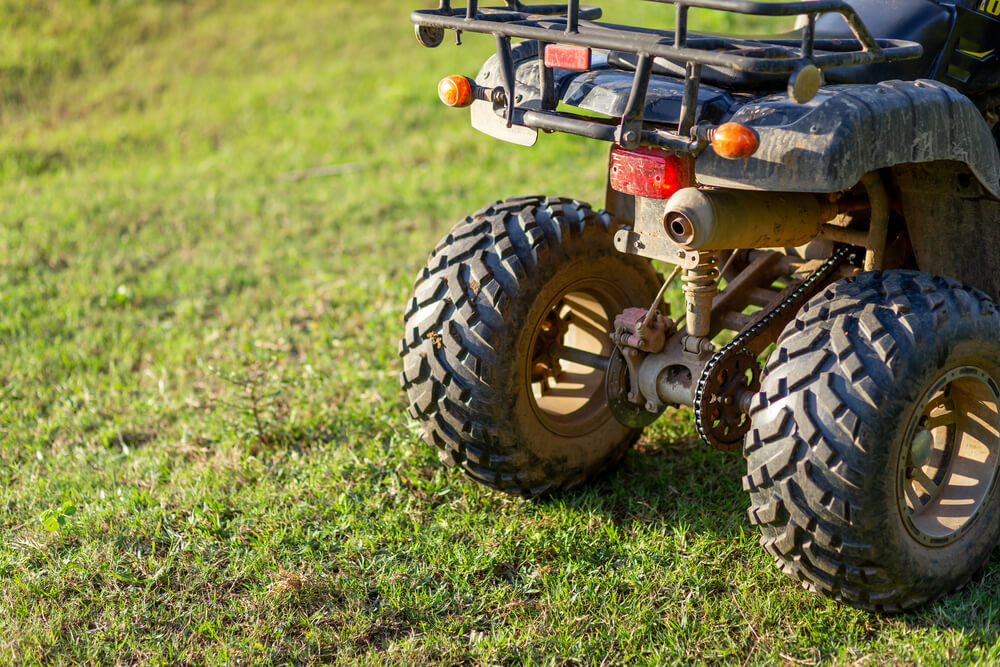
When it comes to ATV tires, it’s essential to understand how their sizing works. This knowledge will help you make the right choice when purchasing new tires for your all-terrain vehicle.
Let’s discuss the basics of ATV tire sizes and how to read them.
ATV tire sizes are typically displayed as three sets of numbers, such as 25×10-12.
In this example, the first number (25) represents the overall diameter of the tire in inches. This measurement is crucial for ensuring the tire will clear the fenders and other parts of your ATV.
The second number (10) indicates the tire width in inches. A wider tire can provide better traction but may affect the handling of your ATV.
Lastly, the third number (12) denotes the wheel diameter in inches, which is the size of the rim that the tire fits onto.
It’s also worth noting that some ATV tire sizes use a metric format, like 205/80R12. In this case, the first number (205) is the tire width in millimeters, the second number (80) is the aspect ratio (sidewall height as a percentage of width), and the letter “R” stands for radial construction.
The final number (12) remains the wheel diameter in inches. However, metric sizing is quite uncommon for ATVs, and you’re less likely to encounter it.
Different types of ATVs require different tire sizes.
For example, Sport ATVs usually have tires ranging from 20 to 25 inches, while Utility ATVs generally use tires between 24 and 28 inches.
You should refer to your ATV’s owner’s manual or contact the manufacturer for the recommended tire size for your specific model.
When choosing ATV tires, consider the type of terrain you’ll be riding on and how it may affect your tire choice. F
or instance, mud tires have a more aggressive tread pattern for better traction in muddy conditions, while sand tires have a paddle-like design for optimal performance on sandy surfaces.
Keep in mind that some tires are designed for specific types of ATVs or riding styles, so ensure that the tires you select are compatible with your vehicle.
Understanding ATV tire sizes is essential to make informed decisions when purchasing new tires for your all-terrain vehicle.
Always refer to your ATV’s owner’s manual for the recommended tire sizes and consider the type of terrain and riding style to choose the most suitable tires for your needs.
Components of ATV Tire Sizes
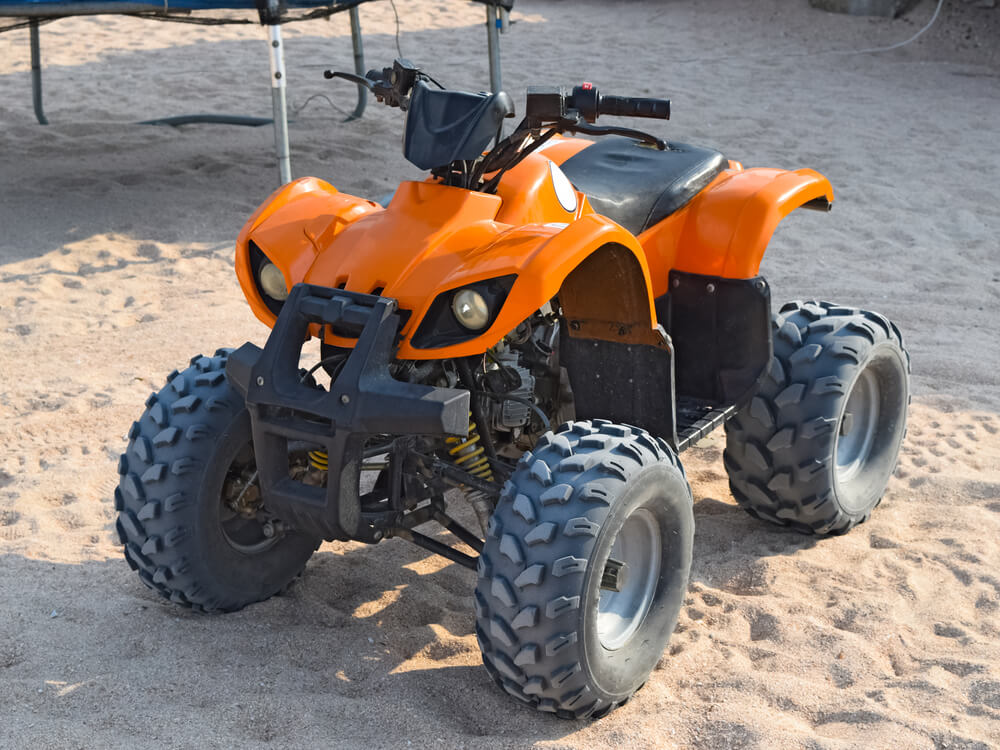
ATV tire sizes can be confusing if you’re not familiar with the numbers and their meaning. In this section, we’ll break down the components of ATV tire sizes and explain what each number represents.
We’ll cover the diameter, width, and wheel diameter of ATV tires to give you a better understanding of what those numbers mean.
Diameter
The first number you’ll see in an ATV tire size refers to the overall diameter of the tire when it’s fully inflated. This measurement is crucial because it can affect your ATV’s performance and ground clearance.
A larger diameter tire generally provides more ground clearance, while a smaller diameter tire offers better acceleration and maneuverability. You should always choose a diameter that suits your specific needs and riding conditions.
For example, if you often ride on uneven terrain, you might prefer a tire with a larger diameter to provide better ground clearance.
Width
The second number in an ATV tire size represents the overall width of the tire when it’s fully inflated. This measurement is important because it directly affects the stability and traction of your ATV. A wider tire has a larger contact patch with the ground, which can improve traction and stability.
However, wider tires can also be heavier and may decrease fuel efficiency. It’s essential to find a balance between the width that provides the necessary traction for your riding conditions and the weight and fuel efficiency that suit your preferences.
Wheel Diameter
The last component of an ATV tire size is the wheel diameter, which is typically included after the diameter and width measurements and is denoted in inches. This number indicates the size of the wheel that the tire is designed to fit.
For example, a tire size might be displayed as “25×10-12,” with “12” representing the wheel diameter.
Wheel diameter is important because it ensures that the tire will properly fit your ATV’s wheels. If you choose a tire with the wrong wheel diameter, it may cause problems with your ATV’s performance or even lead to an accident.
Always make sure to choose a tire with the correct wheel diameter for your specific ATV model.
By understanding the components of ATV tire sizes, you can make an informed decision when it comes time to purchase new tires for your all-terrain vehicle.
Keep these factors in mind, and you’ll be better equipped to find the right tire size for your specific needs and riding conditions.
Interpreting ATV Tire Size Numbers
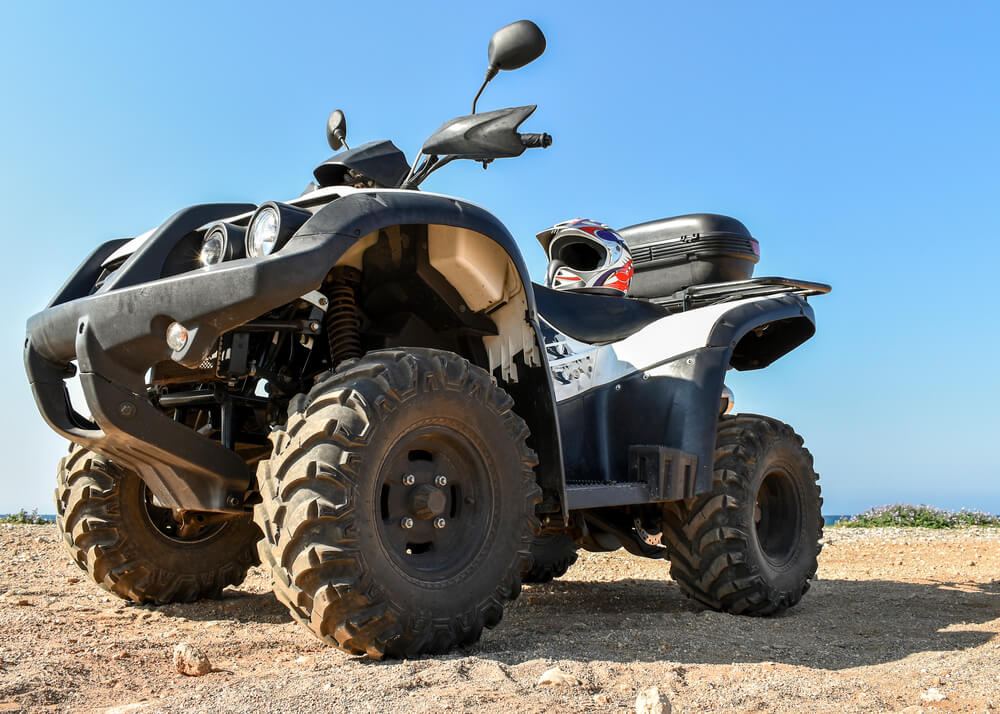
When looking at ATV tire sizes, it’s essential to understand what the numbers mean. Typically, you’ll see a series of three sets of numbers.
For example, 25×10-12. In this case, the first number (25) represents the tire’s height in inches, the second number (10) denotes its width in inches, and the third number (12) indicates the rim diameter in inches that the tire is designed to fit.
Aspect Ratio
Now that you have a grasp of each number’s purpose, it’s crucial to understand the aspect ratio of your ATV tire, which can be found by dividing the width by the height of the tire. For example, a tire size of 25×10-12 generates an aspect ratio of 40%.
It indicates that the tire’s width represents 40% of its height. Generally, a lower aspect ratio translates to better handling and stability on rough terrains, whereas a higher ratio offers a smoother and more comfortable ride.
Compression and Traction
Another critical factor to consider when determining the right ATV tire size is the level of compression and traction it offers. You should look for tires with more lugs and deeper treads to improve your ATV’s grip on various surfaces.
If you frequently use your ATV on steep or rocky terrain, opt for a tire that provides exceptional traction, which you can identify by checking its ply rating. A higher ply rating indicates improved durability and resistance to punctures.
By understanding these essential elements of your ATV tire size, you can choose the right tire for your specific usage and terrain requirements.
Remember to replace your tires as needed to maintain the optimal performance and safety of your ATV.
Importance of Accurate ATV Tire Sizing
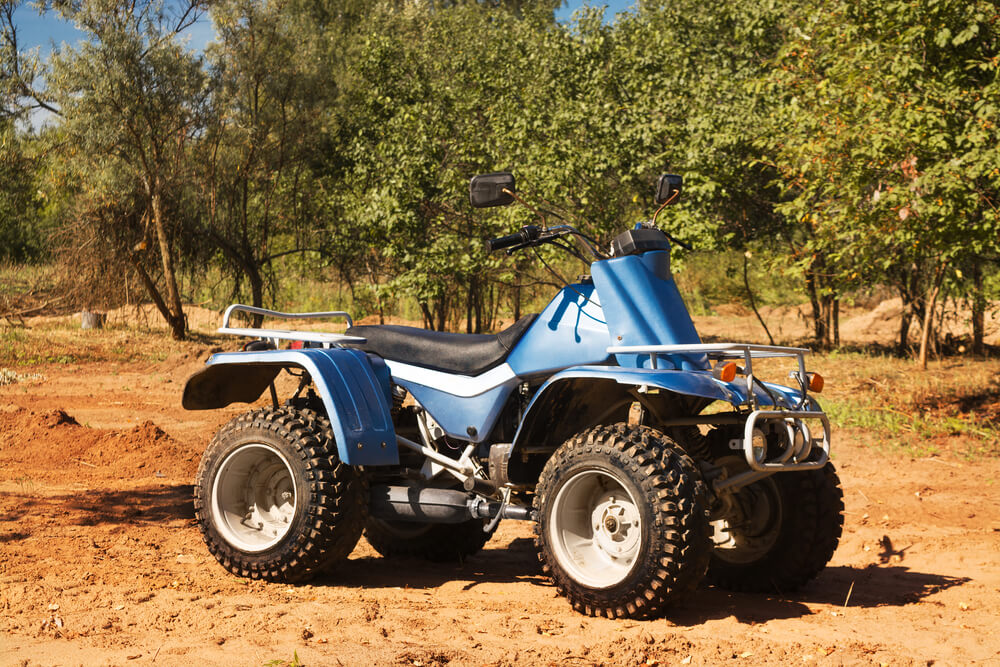
Choosing the right ATV tire size is crucial for achieving optimal performance and handling. Accurate tire sizing directly affects your ATV’s acceleration, braking, speed, and maneuverability.
Here are a few reasons why you should pay attention to ATV tire sizing:
- Safety: Properly sized tires ensure better traction and stability on various terrains, reducing the chances of losing control or accidents.
- Ride comfort: The right size tire will provide a smoother ride as it can better absorb impact, reducing vibrations and making your off-roading experience more enjoyable.
- Performance: A well-fitted tire improves your ATV’s responsiveness and acceleration. It also ensures optimal braking, allowing you to stop your vehicle quickly and safely when needed.
- Fuel efficiency: Correct tire sizing helps maintain the fuel efficiency of your ATV by minimizing rolling resistance and providing the right amount of grip.
To select the appropriate tire size for your ATV, first refer to the owner’s manual or look for the manufacturer’s recommended tire size on the sidewall of the existing tires. There’s a standardized tire size notation that usually consists of three numbers, such as “25×10-12.”
The first number represents the overall tire height when inflated, the second number indicates the overall width, and the last number signifies the wheel diameter in inches.
While upgrading or replacing your tires, ensure you maintain the size as close to the manufacturer’s recommendations as possible.
Deviating too far from the suggested dimensions may negatively affect your ATV’s performance, handling, and safety.
Impact of ATV Tire Sizes on Performance

ATV tire sizes can significantly affect your vehicle’s performance. In this section, we will discuss how different tire sizes impact speed and handling.
Speed
Changing the size of your ATV tires can have a direct influence on speed. Generally, taller tires can increase your top-end speed, while shorter tires may help improve acceleration.
Yet, keep in mind that larger tires also tend to be heavier, which can affect your ATV’s acceleration and braking performance.
When considering tire size for speed, take into account the type of terrain you’ll be riding on and your preferences for acceleration versus top speed.
Handling
The handling of your ATV is influenced by tire size as well. As a general rule, wider tires can provide better traction and stability on various terrains. This can be particularly helpful when navigating slippery or uneven surfaces.
On the other hand, narrower tires can help increase maneuverability, making your ATV more agile and responsive. This can be an advantage in tight or technical off-road situations.
When selecting the right tire size for handling, consider the environment in which you’ll be using your ATV and the types of challenges you’ll face. A balance between stability and agility may be the best solution for your needs.
Overall, understanding how tire size affects performance is key to achieving the ideal setup for your off-road adventures.
Choosing The Right ATV Tire Size
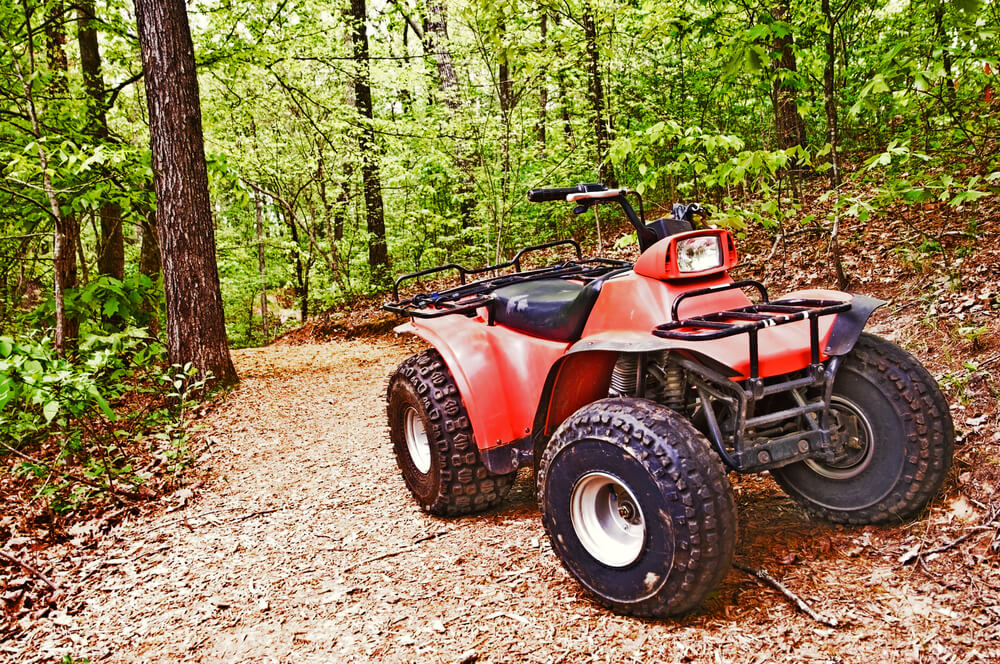
When it comes to selecting the appropriate tire size for your ATV, there are several factors to consider.
Firstly, make sure you understand the sizing format. ATV tire sizes are typically given in three numbers separated by dashes or slashes, such as 25-8-12 or 25/8/12.
The first number represents the overall tire height, the second number represents the tire width, and the third number represents the wheel diameter, all in inches.
Once you know the format, assess your needs.
Think about the terrain you’ll be driving on, along with the desired performance and handling characteristics. Smaller tire sizes provide better acceleration, while larger tire sizes offer more top speed and enhanced stability on rough terrains.
Keep in mind the type of tire will also play a role in performance. Different tires are designed for various terrains, such as mud, sand, or rocks. So, it’s essential to understand the tires’ intended use.
Lastly, always consult your ATV’s owner’s manual or manufacturer’s recommendations for the ideal tire size and specifications. Incorrectly sized tires may not only cause fitment problems but also negatively impact your ATV’s performance and handling.
By considering the factors mentioned above, you can make a more informed decision when choosing the right tire size for your ATV, ensuring the optimal balance between performance, stability, and safety.
Potential Issues with Incorrect ATV Tire Sizes
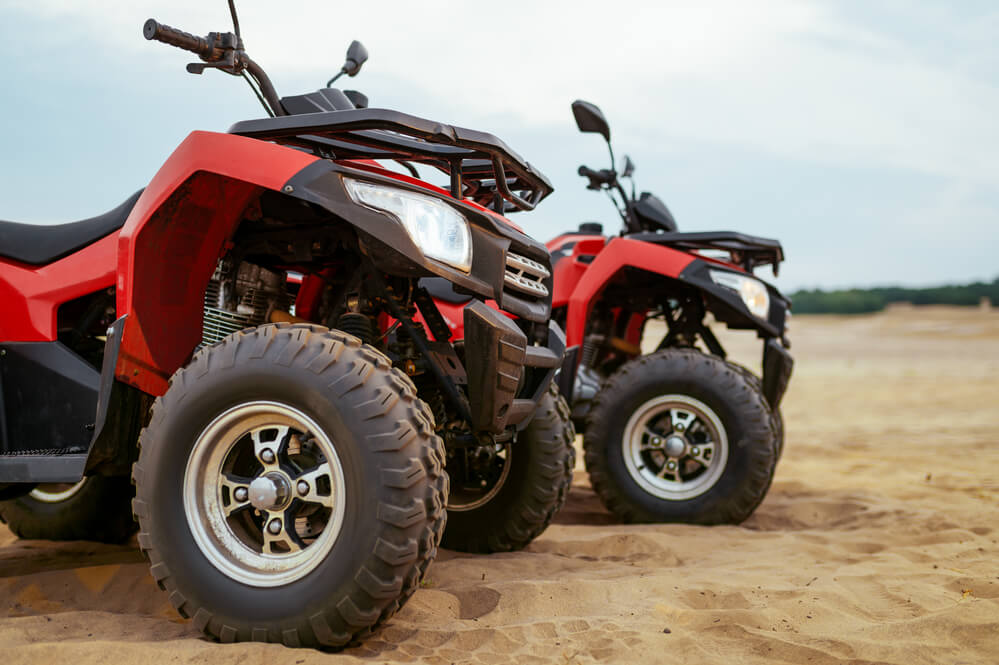
Choosing the wrong tire size for your ATV can lead to several problems that may affect your riding experience and safety.
In this section, we will discuss some potential issues that may arise from incorrect ATV tire sizes.
Firstly, using tires that are too large for your ATV can result in reduced handling capabilities. Larger tires have more contact with the ground, which can cause your ATV to become less responsive to your inputs.
Further, these larger tires may have a negative impact on your ATV’s suspension, as the added weight can cause excessive stress on the suspension components. This can lead to premature wear or even failure of the suspension system.
Another issue that you may encounter when using oversized tires is a reduction in your ATV’s overall performance. This is because larger tires are generally heavier, which can result in slower acceleration and reduced top speed.
Also, the increased surface area of the tire can create more rolling resistance, making it harder for your ATV’s engine to maintain its speed. You may also need to consider installing a clutch kit to recalibrate the clutch to match the bigger wheels, which can cost around $300.
On the other hand, choosing tires that are too small for your ATV can also create problems. Smaller tires can lead to decreased stability, as there is less contact with the ground, which can make your ATV more prone to tipping over.
Furthermore, smaller tires may cause your ATV to sit lower to the ground, increasing the risk of damage from rocks and other debris while riding off-road.
Incorrect tire sizes can also affect the wear of your tires. If you choose a tire size that is not optimal for your ATV, you may experience uneven wear, which could lead to premature tire replacement.
When choosing your tire size, it’s essential to consider the recommended tire size for your ATV to ensure optimal performance, handling, and longevity.
Selecting the correct ATV tire size is crucial for maintaining the performance, handling, and safety of your ride.
Considering the potential issues that may arise from incorrect tire sizes, it’s essential to take the time to research and select the appropriate tire size for your specific ATV model.
Conclusion
In understanding ATV tire sizes, it’s essential to know the numbers on the tire sidewall. The first number you’ll see represents the overall height of the tire when inflated, while the second number indicates the overall width of the tire when filled with air.
These numbers can be found in two formats: imperial (inches) and metric (mm + inches). For example, you might see a tire size like 27X10R12 (imperial) or 215/80R14 (metric).
When choosing ATV tires, it’s crucial to consider the purpose of your riding and the terrain you’ll be covering. Bigger tires can often provide a smoother ride over unpaved terrain and increase the speed of your ATV.
However, keep in mind that the rim size is the least flexible, so unless you’re prepared to purchase different rims, you’ll need to buy tires that fit your current rims.
Understanding how ATV tire sizes work can make informed decisions when selecting the perfect set of tires for your off-road adventures. The right tire size not only enhances your ATV’s performance but also ensures a safe and enjoyable riding experience.
Frequently Asked Questions
How are ATV tire sizes determined?
ATV tire sizes are indicated on the tire sidewall and generally follow two sizing formats: Imperial (inches), such as 27x10R12 or 27×10-12, and Metric (mm + inches), such as 215/80R14 or 215/80-14.
Among the two formats, the Imperial system in inches is more commonly used for ATV tires.
What factors should be considered when comparing ATV and UTV tire sizes?
When comparing ATV and UTV tire sizes, consider factors such as the overall height, width, rim diameter, intended use, load capacity, and specific vehicle requirements.
Choosing the appropriate tire size ensures your vehicle’s performance and handling are optimized for your riding needs.
How does the rim size affect an ATV tire?
The rim size, represented by the third number in the tire size, refers to the wheel or rim diameter on which the tire is mounted. The rim size directly impacts the tire’s stability, support, and overall fit.
Keep in mind that it’s crucial to select a tire that is compatible with the existing rim to avoid issues related to handling and performance.
How can I find the proper tire size for my specific ATV model?
To find the right tire size for your ATV, refer to the owner’s manual, which often lists the recommended tire sizes for your vehicle. Alternatively, you can check the tire size marked on the sidewall of your current tires.
If you’re looking for aftermarket tires, make sure you choose a tire size that matches your ATV’s specifications and intended riding conditions.
What is the difference between 25 and 26-inch ATV tires?
The primary difference between 25 and 26-inch ATV tires is their overall diameter. A 25-inch tire has a one-inch smaller diameter compared to a 26-inch tire. This difference can impact ground clearance, ride quality, and traction.
The choice between these tire sizes largely depends on the terrain and riding conditions you plan to encounter, along with your ATV’s specific requirements.
How can I determine the widest tire for my ATV rim?
To determine the widest tire that fits your ATV rim, consider both the tire width and rim width. The tire width should be compatible with the rim width to ensure proper fit and performance.
Consult your owner’s manual or ATV manufacturer for a recommended range of tire widths suitable for your specific rim size. Additionally, keep in mind that wider tires may require fender or suspension modifications to prevent interference.

